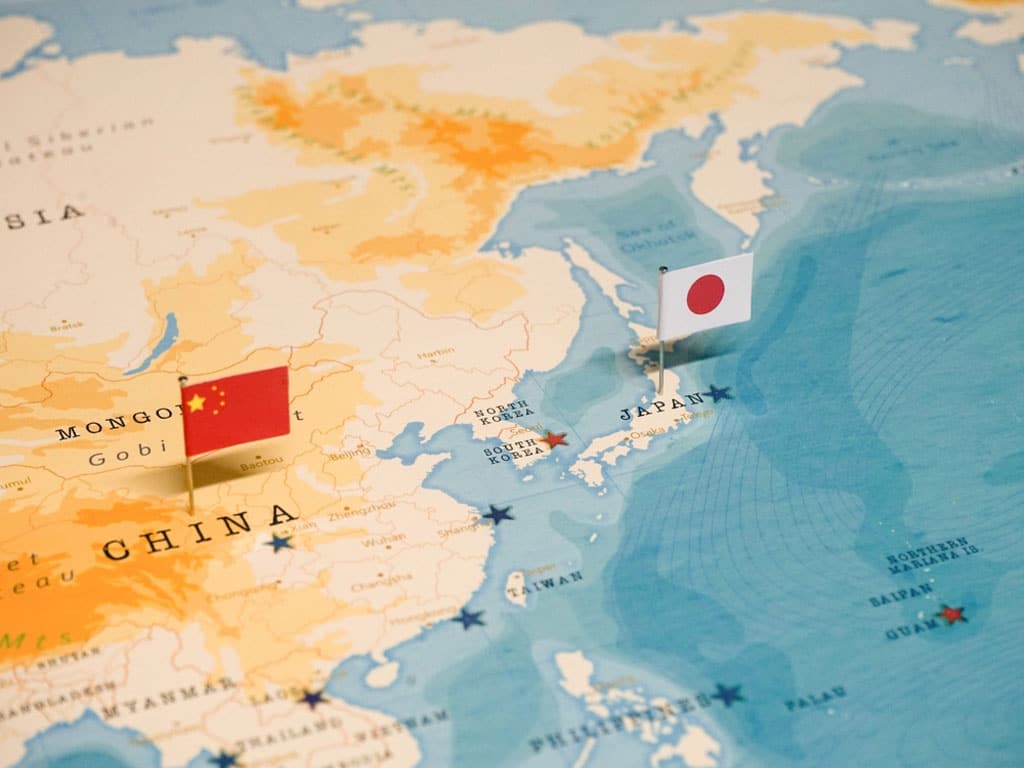Global Market, Urban Renewal, and Japan-China Cooperation

In 2005, during the Sixth Ministerial Conference of the World Trade Organization in Hong Kong, the world witnessed large-scale protests by South Korean farmers on the streets of Hong Kong, along with intense clashes between the protesters and the Hong Kong police. Prior to that, similar mass protests had erupted in Cancun, Mexico. These were the indications that the global space was already undergoing fragmentation。
This fragmentation spans multiple aspects, including trade, culture, ethnicity, and the internet. Even then, there were signs, though undetected by many, that global integration would eventually unravel due to the fragmentation of space, heralding the onset of an era of de-globalization.
Both China and Japan have been among the biggest beneficiaries of globalization. Similar to Germany in Europe, both countries take pride in their outstanding manufacturing industries. Japan, in particular, has seen a large number of Japanese companies invest overseas, effectively creating a borderless, new version of Japan in the global market. At the same time, these Japanese companies reinvest their overseas earnings into Japanese government bonds, contributing to the Japanese economy. This has fostered a healthy and admirable economic cycle.
Compared to Japan, China primarily benefits from the global market through exports. Taking 2023 as an example, China’s net exports contributed 30.3% to its economic growth, driving GDP growth by 1.5 percentage points. In contrast, investment, which China once took great pride in, only contributed 25.2% to economic growth, resulting in a 1.3 percentage point increase in GDP. Consumption, on the other hand, contributed 2.2 percentage points to GDP growth. Therefore, within China’s 5% economic growth rate, net exports still play a decisive role, clearly indicating that the global market holds
Yet, there is a problem in this. As globalization gives way to de-globalization, it is unreasonable to continue assuming that the global market will remain unchanged. Today, we see the United States imposing tariffs globally, i.e., 25% on Canada, 25% on Mexico, and 10% on China. The tariff disputes between the U.S. and Europe are also intensifying. As the world’s largest buyer market, the United States is using trade wars to maximize its national interests. This is a return to a more conservative, nation-centered approach.
It is not just the United States that is returning to a nation-centered stance; the entire world is, in fact, reverting to a focus on national interests. This has become an unstoppable global trend. The far-right in Europe has already secured political victories in Austria, Italy, and Hungary, while right-wing movements are also rising in France and Germany. In particular, conservative parties in Germany have become one of the dominant forces in the country’s political landscape. These movements share common goals: prioritizing national interests and showing a lack of respect for the European Union, with some even advocating for an EU exit. From the World Trade Organization to the World Health Organization, and the North American Trade Agreement, along with many other alliances and treaty organizations, multilateral trade mechanisms are disintegrating. They are like snow under the spring sun, melting at an astonishing speed.
While the scale and demand of the global market remain, the system of the global market is disintegrating. This is the reality of the future world. In such a world, what we are witnessing is a return to the essence of the nation, the essence of trade, and the essence of the individual. The trend of integration is being reversed, and what is emerging is a focus on the individual. Multilateral relationships are being replaced by regional or bilateral relations, and traditional diplomatic orders and norms are being replaced by simpler, more direct transactions. The culture movements of highly influential minorities are being replaced by broad, consensus-driven social movements. Establishment elite politicians too are being replaced by non-establishment pragmatists.
In the face of such a world, the concept of “strategic autonomy” can no longer keep pace with the rapidly shifting landscape. Countries around the world are hastily responding to this structural transformation.
China is an independent market with a GDP size of $19 trillion. It is also aware that the world is changing and recognizes the need to take corresponding steps to respond. Therefore, China is moving towards a more proactive domestic circulation economic model, with urban renewal being one of the key areas.
As things stand, urban renewal is a relatively new challenge for China. For a long time, China’s economic system, including land, investment, and construction units, has been more suited to large-scale, rapid development, using mass production methods to develop urban spaces. As a result, large urban settlements with populations of hundreds of thousands are found everywhere in China. On the one hand, this approach to spatial development has created the miracle of world urbanization, resulting in the largest and fastest urbanization in the world. China’s urban population grew from 170 million in 1978 to 920 million in 2022, an increase of 750 million people, which exceeds the total population of Europe. On the other hand, the scale and speed have also caused significant problems, especially because the rigidity of material infrastructure construction cannot adapt to the flexibility of population and economic fluctuations, leading to major issues. Large urban construction projects have not fully considered the arrangement and flexibility needs of the urban population. As China quickly enters an aging and super-aged society, and as the economy is undergoing structural adjustments, China’s cities are facing numerous difficulties and challenges that urgently require urban renewal and transformation.
Urban renewal is a relatively new challenge for China. For a long time, China’s economic system, including land, investment, and construction units, has been more suited to large-scale, rapid development, using mass production methods to develop urban spaces. As a result, large urban settlements with populations of hundreds of thousands are found everywhere in China. On one hand, this approach to spatial development has created the miracle of global urbanization, resulting in the largest and fastest urbanization in the world. China’s urban population grew from 170 million in 1978 to 920 million in 2022, an increase of 750 million people, which exceeds the total population of Europe. On the other hand, the scale and speed have also caused significant problems, particularly because the rigidity of material infrastructure construction cannot adapt to the flexibility needed to accommodate population and economic fluctuations, leading to major socio-economic issues. Large urban construction projects have not fully considered the arrangement and flexibility needs of the urban population. As China rapidly enters an aging and super-aged society, and as the economy undergoes structural adjustments, China’s cities are facing numerous difficulties and challenges that urgently require urban renewal and transformation.
Faced with such a daunting task, urban renewal emphasizes more refined spatial transformation centered on the people, compared to the past development approach. The shift from large-scale development to more refined, people-oriented strategies will not naturally transition smoothly. This urban renewal model is unfamiliar to China’s development and construction institutions, whereas Japan has extensive experience in this regard. Therefore, Japan can serve as a model for China to navigate through such challenges as it attempts to remain relevant and crucial in the global market.
Have you read?
Most Productive Countries in the World.
Most peaceful countries in the world.
Most influential financial centers in the world.
Most Powerful Currencies In The World.
Bring the best of the CEOWORLD magazine's global journalism to audiences in the United States and around the world. - Add CEOWORLD magazine to your Google News feed.
Follow CEOWORLD magazine headlines on: Google News, LinkedIn, Twitter, and Facebook.
Copyright 2025 The CEOWORLD magazine. All rights reserved. This material (and any extract from it) must not be copied, redistributed or placed on any website, without CEOWORLD magazine' prior written consent. For media queries, please contact: info@ceoworld.biz








